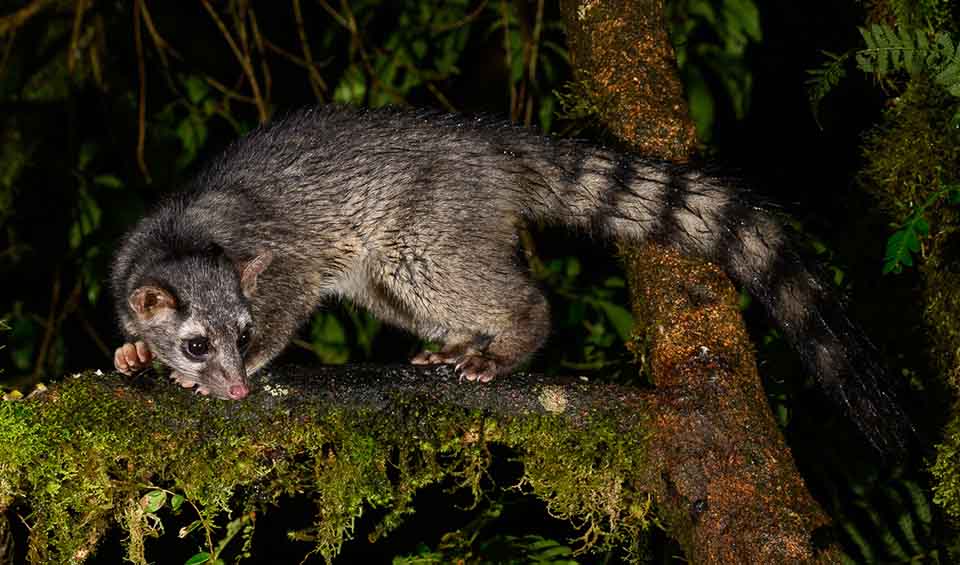Cacomistles, with their distinct grey and dark brown coats, inhabit the lush forests of Central and North America, presenting a captivating spectacle with their unique physical attributes and behaviors. The black tail, adorned with striking white stripes that gradually fade as they approach the tip, finishing in solid black, is one of their most distinctive features. This characteristic tail, combined with their overall appearance, often leads to confusion with the ring-tailed cat. However, a closer look reveals significant differences, such as the cacomistle’s non-retractable claws, which set them apart from their look-alikes.
Adapted to life in the trees, cacomistles exhibit a remarkable preference for the upper and middle levels of the forest canopy. This arboreal lifestyle allows them to navigate through the forest with agility and grace, seldom making trips to the forest floor. Their ability to move through the canopy with ease is a testament to their adaptability and specialized skills in navigating their environment. This preference for elevated habitats not only offers protection from ground-dwelling predators but also positions them closer to their food sources.
Nocturnal by nature, cacomistles embark on their foraging activities under the cover of night. Their diet is impressively varied, reflecting the opportunistic feeding habits that allow them to thrive in their natural habitats. Insects, fruits, and small vertebrates, including amphibians, rodents, and reptiles, comprise the bulk of their diet. The selection of food by these creatures is heavily influenced by seasonal availability, demonstrating their flexibility in adapting to the changing environment. This dietary adaptability ensures that they can sustain themselves throughout the year, even as food availability fluctuates.
Distribution
 Belize
Belize Costa Rica
Costa Rica El Salvador
El Salvador Guatemala
Guatemala Honduras
Honduras Mexico
Mexico Nicaragua
Nicaragua Panama
PanamaAnything we've missed?
Help us improve this page by suggesting edits. Glory never dies!
Suggest an editGet to know me
Terrestrial / Aquatic
Altricial / Precocial
Polygamous / Monogamous
Active: Diurnal / Nocturnal
Dimorphic (size) / Monomorphic
Social behavior: Solitary / Pack / Herd
Diet: Carnivore / Herbivore / Omnivore / Piscivorous / Insectivore
Migratory: Yes / No
Domesticated: Yes / No
Dangerous: Yes / No




